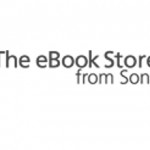 Las Vegas — After failing to win the market share to Firefox and other rivals for years, Microsoft Corp. early on Thursday at the MIX09 conference in Las Vegas for Web developers and designers, announced the availability of the final version of its next generation Internet Explorer 8 with enhanced security features that is more secure against malware than rival browsers from Mozilla and Google “that no other browser can match,” according to CEO Steve Ballmer.
Las Vegas — After failing to win the market share to Firefox and other rivals for years, Microsoft Corp. early on Thursday at the MIX09 conference in Las Vegas for Web developers and designers, announced the availability of the final version of its next generation Internet Explorer 8 with enhanced security features that is more secure against malware than rival browsers from Mozilla and Google “that no other browser can match,” according to CEO Steve Ballmer.
The conference, which extends from March 18 to 20, has already witnessed the launch of the Silverlight 3 beta, and a preview version of the Expression Blend 3 web design and prototyping tool.
In an attempt to recapture the lost ground to its rivals, Microsoft is hoping to convince people, many of whom use old versions of Internet Explorer, to give the company a new look.
The application that includes enhanced security, extended standards support, and an overhauled UI are among the browser’s most significant features of Microsoft’s eagerly awaited Windows 7 operating system, that delivers major changes in a bid to safeguard its dominance and fend off an increasingly crowded field of browsers, including the rapidly rising Mozilla Firefox.
Microsoft released the final version of Internet Explorer 8 at noon Eastern time on Thursday, and is available for download in 25 languages from Microsoft’s website from 9 a.m. Pacific time, free for people using licensed Microsoft operating systems.
IE8, as it is commonly referred to, has been in public beta testing for about a year, but Thursday’s launch marks its full public rollout. Installers will be available for Windows XP, Windows Vista, and Windows Server in both 32-bit and 64 bit editions. However, IE8 is not yet available for the Mac.
“We are releasing it here at Mix because we are excited about what you, the developers, can build with it,” IE general manager Dean Hachamovitch said. Hachamovitch then launched into a demo of the new browser, touting its anti-malware features, such as protection from click-jacking attacks.
“Customers have made clear what they want in a Web browser — safety, speed and greater ease of use,” said Steve Ballmer, CEO of Microsoft, in a statement. “With Internet Explorer 8, we are delivering a browser that gets people to the information they need, fast, and provides protection that no other browser can match.”

The IE8 delivers to the table an array of new user-friendly features. The browser has been downloaded tens of millions of times since it entered public testing mode a little more than a year ago, constituting one of Microsoft’s largest beta tests ever. Enhanced security is one of IE8’s most significant features. NSS Labs released an independent study early Thursday showing IE8 significantly outflanking rivals like Mozilla Firefox, Apple Safari, Google Chrome, and Opera in catching and blocking malware. “With its SmartScreen filtering, IE8 Release Candidate 1 caught 69% of malware, while Firefox 3.07 caught only 30%.”
The application replaces IE7, which has a lock on the browser market. According to a recent study conducted by IT consultants Janco Associates Inc., Internet explorer has a 72.2% market share, ahead of the Mozilla Foundation’s Firefox browser with 17.2%. Google Inc.’s new Chrome browser has only 2.8% of the market, while Apple Inc.’s Safari has less than 1%.
Addressing to a crowd of Web developers, Hachamovitch also expended a good deal of time speaking about the moves Microsoft made to make IE8 far more standards-compliant than earlier versions.
IE8 is also bundled with other security features, including an InPrivate Browsing mode that keeps no trail of browsing history and new features that prevents certain cross-site scripting attacks, click-jacking, and the installation of malicious ActiveX controls.
The user interface in IE8 has been overhauled, complementing with new features such as color-coded browser tabs to group recently opened tabs together, the ability to recommend sites, a new visual search feature that allows users to see pictures of things such as eBay and Amazon results, auto-completion of searches and URLs, and a toolbar like Mozilla Firefox’s for searching within a page. New tabs also show commonly visited Web sites as links, and tabs work in isolation so that if one tab crashes, the entire browser does not.
The biggest ding on IE8 so far has been its performance. Microsoft has trided to blunt criticism in two ways. First, the company has released a video that it says shows that its browser is faster at loading a number of key sites. Second, the company has tried to downplay the difference in speed to the average user.
“In most cases the difference could literally be measured by a blink of an eye,” Microsoft Senior Director Amy Barzdukas said in an interview on Wednesday. “That kind of speed becomes almost a push.”
The release of IE8 comes at a critical time for Microsoft, which faces its steepest competition in years, facing credible rivals not only in Firefox, but also from Apple and Google, among others. However, IE8 will be incorporated as part of the Windows 7 OS. And, for the first time since adding browser technology to its operating system, Microsoft will give users the ability to turn off IE8 as a feature in the system.


